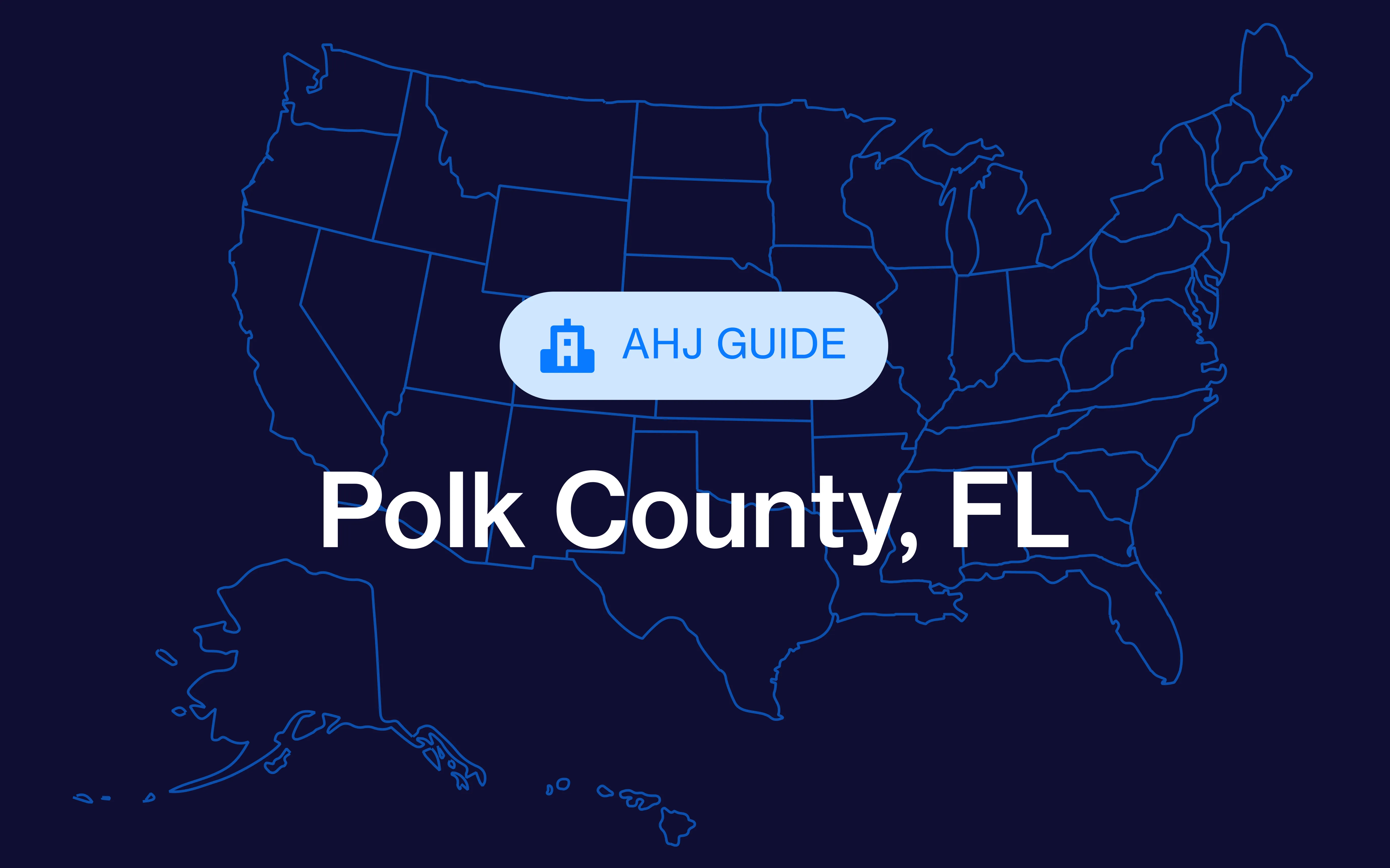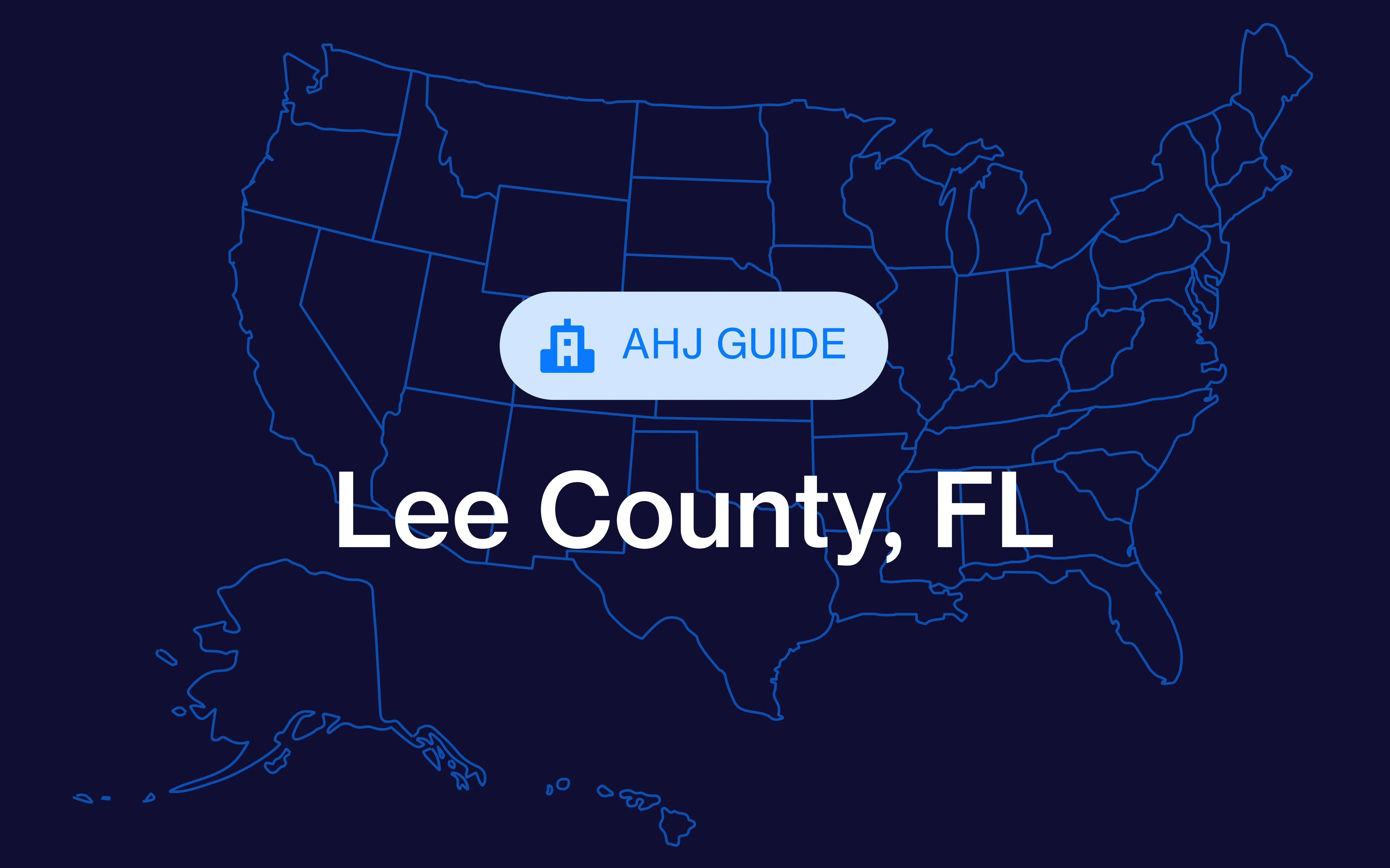The rules and regulations around building permits differ from one county to the next, and even more so when you cross state lines. These different regulations can lead to more complex permitting processes for builds located on jurisdiction lines, or multiple projects that span across a variety of different jurisdictions.
Balancing different requirements, timelines, and regulations can be impossible for one person to handle. And hiring more than one individual might be too much for one small organization to handle.
One way to handle the complexities of different jurisdictions is by using building permit software. This solution helps smaller construction teams manage business in different jurisdictions without breaking the bank. In this article, we’ll uncover the variations of permit requirements across jurisdictions, how to handle key challenges due to multiple jurisdictions, and how you can use building permit software to solve these issues.
How building permits vary depending on jurisdiction
Thinking outside of building permits for a little bit, consider how the external climate, environment, and landscape can affect the structural integrity of a building. A house in Denver, Colorado is not going to have the same needs as a commercial building located in Sarasota County, Florida. The house in Denver needs to account for snow, altitude, and cold weather in the winter, while the building in Florida needs to prepare for potential natural events such as hurricanes.
This is why building permit applications vary depending on where the building is located — different locations require different needs to be deemed safe. Local building codes are designed with safety and security in mind and consider external factors like weather, climate, and other location-specific safety measures.
Jurisdiction-dependent variations of building permits
The following list of items are different areas that might vary between jurisdictions within the building permit process. This is not a comprehensive list, so if you do have questions regarding a specific jurisdiction, consult their building permit guidelines or consult PermitFlow's Municipal Guides.
- Building codes: Each municipality adopts its building code and adapts it to the needs of its jurisdiction. This affects the design, construction, and maintenance of buildings located within this municipality.
- Zoning laws: Certain types of structures can only be placed in certain areas due to zoning laws. This can include things like land use, height restrictions, and building usage, but relies primarily on the specific municipality.
- Environmental standards: Some states, like California, have more strict environmental protection laws than others. Depending on the location, you might have to regularly conduct an environmental impact assessment to maintain compliance.
- Types of permits required: The range of different permits, such as electrical, plumbing, or mechanical, can vary based on local regulations. Some work might even require special permits, such as projects on protected land or historical buildings.
- Type of work requiring permits: In some places, minor renovations don’t require a permit, but in others, they do. Always double-check with the municipality the work site is located in.
- Documents required for application: The information you’ll need to submit a permit may vary. These may include architectural plans, engineering schematics, or environmental assessments.
- Fee structures: Some areas provide fixed fees for building permits while others vary depending on the project size.
- Processing times: Different municipalities have different bandwidths in terms of staffing. Some offer ways to expedite your processing in the form of additional payment, but most municipalities will still provide you with an estimate of how long processing should take.
- Review processes: Some municipalities require application review from different departments and this can affect your processing time as well as how applications are reviewed. You may be required to attend an interview to go over your application, but other municipalities don’t require it.
- Inspection schedules and enforcement: Inspections occur at periodic times throughout the build process–when and where those inspections happen is up to the municipality you applied with.
- Permit longevity: Once a permit is approved, it can last anywhere from a few months to several years depending on longevity. Always double-check with your municipality to ensure that it matches your project timelines.
The challenges of managing permits across multiple jurisdictions
For construction businesses with projects across more than one municipality, balancing the permit submission process can be challenging due to the variations between jurisdictions. Managing several different permits at once, especially if they’re all in different municipalities, requires time-consuming administrative work that some smaller construction businesses might not be able to afford.
It becomes even more challenging when election years roll around—local codes and regulations can change. Keeping track of these changes by itself is a full-time job. If your team doesn’t have the bandwidth to have an individual dedicated to permitting, this can create risks if your team is submitting permits manually in several different municipalities.
The other major variation that can cause project delays is the variation between submission deadlines. If you’re submitting a permit for the first time in a new municipality, knowing how long a permit submission will take is never guaranteed. Governments can provide you with potential estimates, but at the end of the day, it’s all dependent on your specific project, municipality, and project timeline.
How building permit software streamlines multi-jurisdictional permit management
Applying for a building permit requires contributions from many stakeholders in your project, and everybody must have the most up-to-date information on compliance checks, document versioning, and project timelines. Consider building permit software as a hub of communication specifically dedicated to permit tracking and management.
When looking for the right building permit software, consider the following features:
- Permit submission tracking: If you’re submitting multiple permits at once in different municipalities, it’s beneficial for your building permit software to provide you with a high-level overview of where each permit is in the process. This helps you in the long run to provide more accurate estimates of how long your construction project will take.
- Document management: Good building permit software tools help manage documents as they relate to a specific permit. This provides one central place for every team to access important permit documents while also minimizing any errors related to document versioning.
- Centralized communication tools: Minimize emailing team members back and forth regarding your permit. Instead, keep all conversations regarding a specific permit tied to the project itself within the building permit software so it never gets lost.
- Digital preparation and submission: Some municipalities allow for online building permit applications. The best building permit software helps provide you with the ability to submit applications through the platform itself.
- Notifications and alerts: If your application has any errors or needs attention in the submission process, the best building permit software notifies your entire team as soon as it happens. This helps to minimize any delays to the submission process and ensures that issues are resolved promptly.
The other major benefit of working with building permit software is that it can help provide you with real-time updates as new regulations go into action. This takes away the manual work your team will need to do to change any potential application processes as they adapt to the changes in different municipalities.
The benefits of building permit software for cross-jurisdictional submissions
Teams who adopt building permit software often see major business benefits, such as the ability to scale or the ability to expand into new markets. This is because of a few different benefits that building permit software provides to construction teams.
Some of these benefits include:
- Automating repetitive tasks: With building permit software, your team can automate and streamline parts of the building permit submission process. This helps to minimize the amount of time spent on time-consuming, repetitive tasks and allows your employees to focus on the more important parts of the project.
- Reducing rejections and non-compliant submissions: When building permit requirements are listed directly in the permit submission software, the tool can alert you of any potential issues before submission even happens. This helps minimize or completely eliminate the amount of errors that are submitted in the long run.
- Streamlining communication with collaborators and local authorities: Playing phone tag and waiting for email responses can waste a lot of time in the permitting process. Providing one central area where everyone communicates is a great way to ensure that communication happens quickly and that all parties can see.
- Establishing a central source of truth for all parties: When all of the information regarding a single permit including documentation and communication happens in one place, there’s no mistaking about what is happening. This central source of truth helps keeps all stakeholders on the same page.
Streamline permit submissions across jurisdictions with PermitFlow
Using building permit software like PermitFlow can help your team manage the complexities of submitting permit applications in different jurisdictions. Minimize the amount of administrative work, streamline communication, and provide clients with more accurate project timelines despite municipal variations. With PermitFlow, your team will be able to handle multiple permits, in multiple jurisdictions, without spending the hours of administrative work behind it.
Interested in learning about how PermitFlow can streamline your permitting workflow? Talk to one of our permitting experts today.








